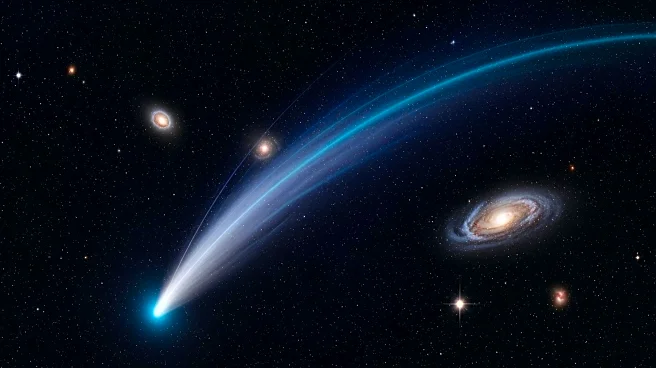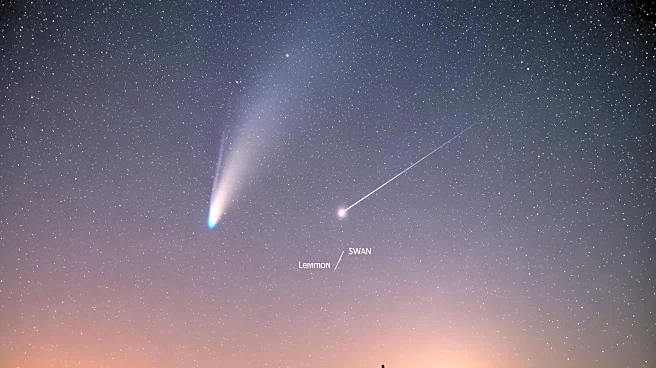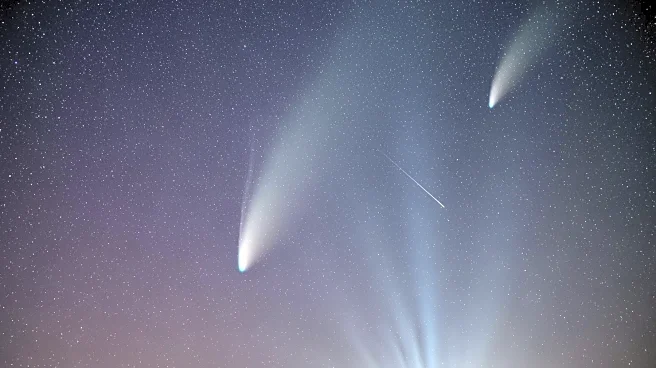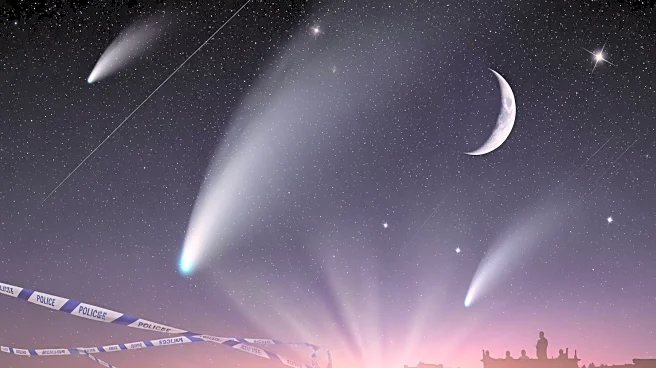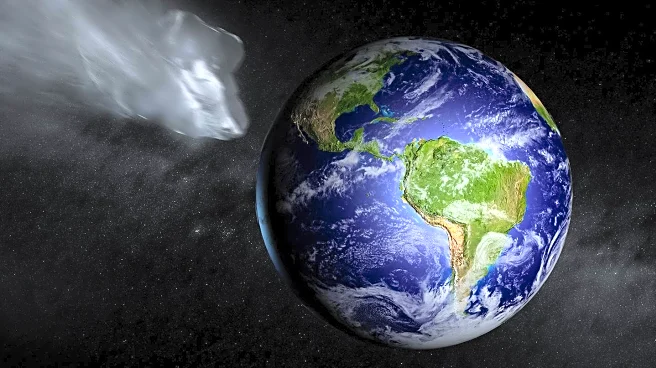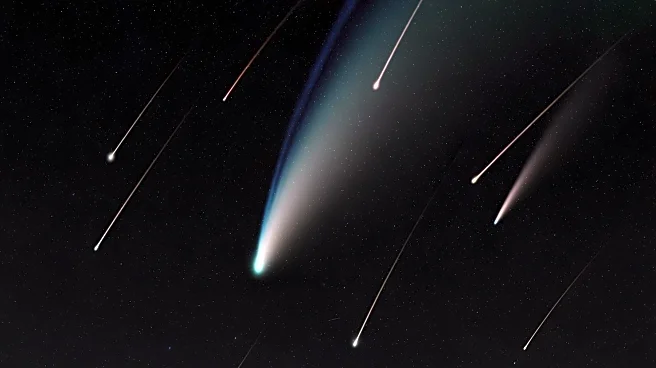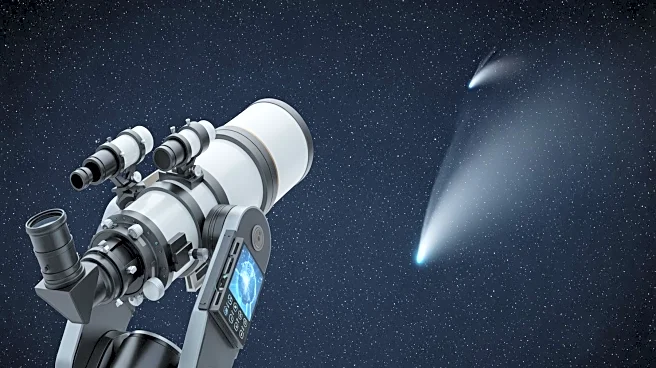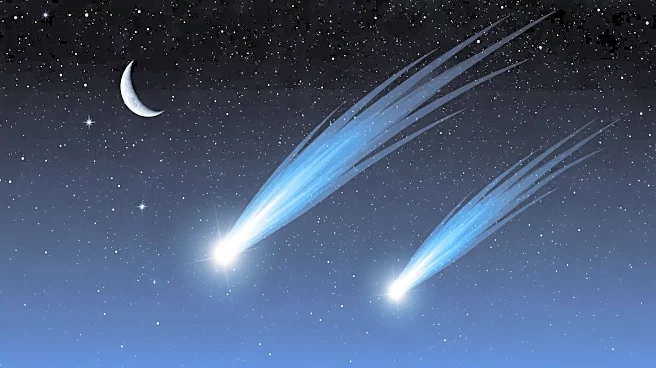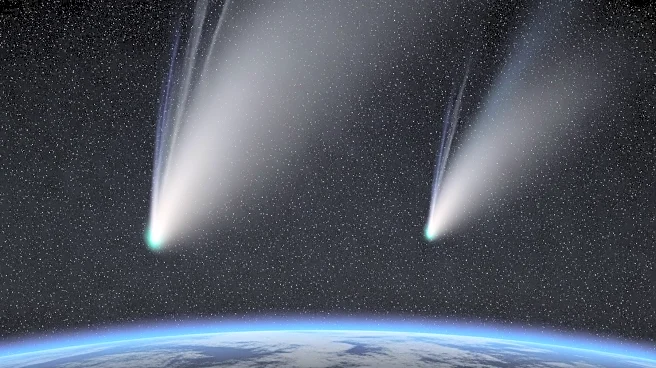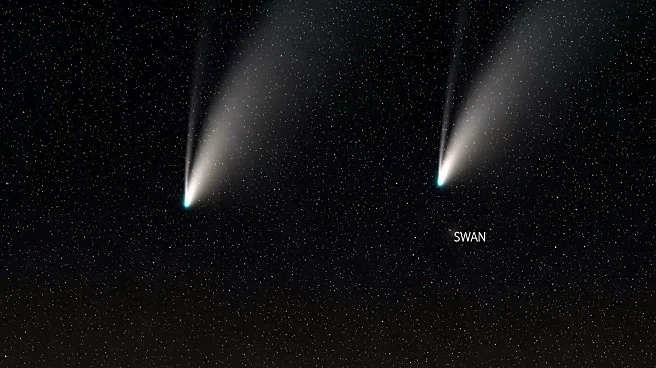What's Happening?
Two comets, C/2025 A4 (Lemmon) and C/2025 R2 (SWAN), are making their closest approach to Earth this week, providing a rare opportunity for stargazers. Comet Lemmon, discovered at the Mount Lemmon Survey
in Arizona, is noted for its bright green tail, a result of the sun melting its icy surface. It will pass approximately 56 million miles from Earth, while Comet SWAN will be closer at 24 million miles. Both comets will be visible in the night sky, with Lemmon best seen in the western evening sky and SWAN in the predawn eastern sky. The peak brightness for these comets is expected tonight, October 21, 2025, coinciding with clear skies forecasted by AccuWeather.
Why It's Important?
The visibility of Comet Lemmon and SWAN presents a unique opportunity for astronomers and the general public to observe celestial phenomena that occur infrequently. Such events can inspire interest in astronomy and science, potentially influencing educational pursuits and public engagement with space exploration. The comets' approach also highlights the importance of astronomical surveys and research in tracking and understanding cosmic objects. For the scientific community, these observations can provide valuable data on comet composition and behavior, contributing to broader knowledge of the solar system.
What's Next?
Stargazers can continue to observe Comet Lemmon until November 3, while Comet SWAN will remain visible throughout November. The Space.com website and the Virtual Telescope Project will host a livestream of the comets on October 24, 2025, allowing wider access to the event. As the comets move away from Earth, astronomers will likely analyze collected data to enhance understanding of cometary dynamics and their interactions with solar winds.
Beyond the Headlines
The appearance of these comets may spark discussions on the long-term tracking of celestial bodies and the potential for future space missions aimed at studying comets up close. Ethical considerations regarding space exploration and the allocation of resources for such endeavors could also arise, as the public weighs the benefits of scientific discovery against other societal needs.
